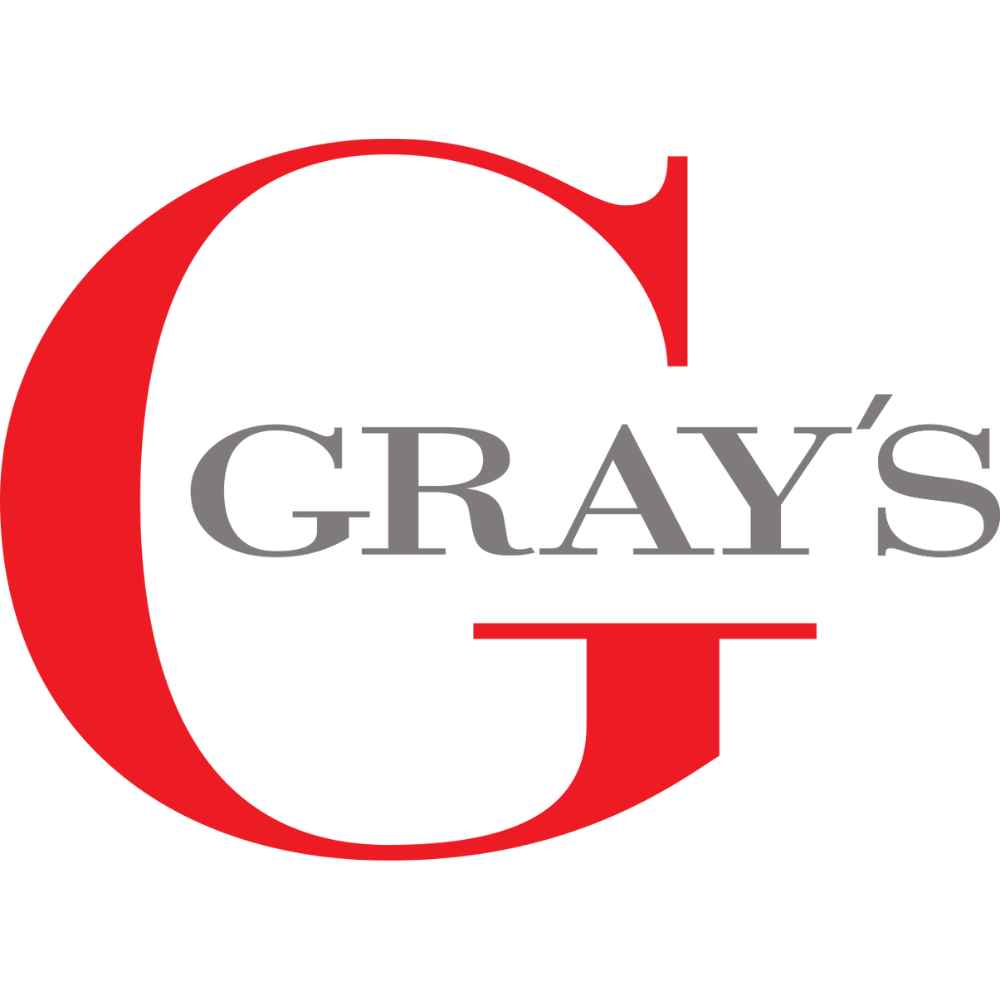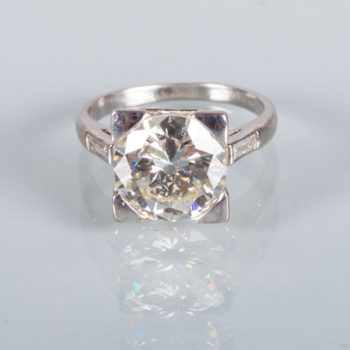The Simple Elegance of the Still Life this Month at Gray’s
Any lover of fine art will be intimately familiar with the still life. An invaluable tool for honing technique and developing a sense of composition, nearly every painter has produced a wealth of them and their styles and subjects are as varied as the artists who created them. This month at Gray’s we have a variety of wondrous still life works up for auction as well as a number of other gorgeous fine art pieces.
First up is Lot 41, Soyez Mysterieuses III by American watercolor painter Joseph Raffael (b. 1933). An alumni of the Yale School of Art and a long time veteran of the New York arts scene, Raffael’s paintings are known for their vivid color work and incredible realism, and have earned him a reputation as a contemporary master of watercolor. As described by Robert Hughes in a 1973 article in Time magazine: “These sumptuous works both dazzle and pull the viewer into the whirling vortex of the painting with a quiet force. Despite their iconic serenity when seen from a distance, Raffael’s paintings disclose a bejeweled profusion of incident close up.” This immensely beautiful still life depicts a vase overflowing with pink blossoms with a woman seated at the window in the background, and truly speaks for itself as a display of subtle and elegant visual poetry.
Lot 94 contains Untitled by Polish-American artist Julian Stanczak (1928-2017), a key figure in the development of Optical art. As a child during World War II, Stanczak was forced into a Siberian labor camp where he permanently lost the use of his right arm. While a teenager in a Polish refugee camp in Uganda, Stanczak taught himself how to write and draw using only his left arm, spending a few years studying in London before settling in Cleveland, Ohio in 1950 and becoming a permanent citizen in 1957, and teaching first at the Cincinatti Academy of Art for 7 years, and then at the Cleveland Institute of Art for 31. Stanczak found success after his first major show, Julian Stanczak: Optical Paintings, held at the Martha Jackson Gallery in New York in 1964, and the source of the name. Hoping to anonymize himself within his work in order to escape the traumatic circumstances of his youth, Stanczak cultivated an abstract style based around the use of stark contrast and visual trickery to create a sense of motion and transparency within his works. The work up for auction stands out among his oeuvre as a more conventional example of abstract expressionism than the mind-bending images he is best known for, but it has a poignancy and drama all its own with its faded colors evoking a sort of melancholy.
We are extremely excited this month to debut a previously undiscovered work by William Merritt Chase. Chase is a landmark figure in the history of American painting: a turn of the century Impressionist with a deft hand for shadow and color, a highly sought-after portraitist, and an esteemed educator and founder of one of America’s greatest artistic institutions: the Chase School of Art, now known as the Parsons School of Art and Design. The newly discovered work, authenticated by Deba Gray of Gray’s Auctioneers, has been officially certified by D. Frederick Baker, director of the William Merritt Chase Catalogue Raisonné Project. Dubbed Jester Resting on a Chair, 1875, the work is one of several “trial poses” Chase painted as preparation for his famous “Keying Up”- The Court Jester. However, since the work is signed and dated, it can be appropriately considered a finished work in its own right rather than a study. As a newly-discovered early work by an undisputed master, Jester Resting on a Chair is a delightful highlight of the auction at Gray’s on May 7th in Lot 24. You can read more about this painting here.
Lot 24a contains a piece by another 19thCentury American Master: Butternut Tree, Study from Nature, Lake George, New York by Asher Brown Durand (1796-1886). A member of the Hudson River School of landscape artists, Durand first came to national prominence as a talented engraver after creating a famous engraving of the signing of the Declaration of Independence for John Turnbull in 1823. Durand’s engravings of scenes from American history put him in high demand, and his engravings on bank notes went on to be used as portraits for America’s very first series of postage stamps in 1847. Durand helped to organize the New York Drawing Association in 1825, which would later be known as the National Academy of Design, and he served as the organization’s president from 1845 to 1861. Around 1830, Durand began to shift away from engraving and towards oil painting, the medium with which he would produce some of his finest and best-known works. Though he spent his life going back and forth between his home town of Maplewood, New Jersey (then called Jefferson Village) and New York City, Durand’s true home was in the untamed wilderness of America’s northeastern mountains where he spent his summers. It was there in the Adirondacks, White Mountains, and Catskills that he would make hundreds of drawings and oil sketches which would later be debuted as the finished academy pieces that helped to define the Hudson River School. Like other members of the Hudson River School, Durand treated nature with a divine reverence, and considered its faithful depiction a sacred responsibility, once writing that “The true province of Landscape Art is the representation of the work of God in the visible creation…” This sensibility is clearly visible in Durand’s meticulous attention to detail and his masterful depiction of natural light. The incredible poignancy and realism of Durand’s landscapes has made them highly sought-after for generations. In 2005, his painting Kindred Spirits reportedly sold at Sotheby’s for $35 million, and as recently as 2007 he was the subject of a solo exhibition at the Brooklyn Museum of Art. Butternut Tree is a beautiful example of this master of landscape painting at his finest.
Lot 13 is a large Triptych entitled Tavern Mural Triptych by Cleveland native and American Modernist William Sommer (1867-1949). Trained as a lithographer for many years before studying Fine Art in Munich and New York, Sommer moved to Cleveland in 1907 and quickly became one of the city’s artistic luminaries. Sommer is considered a leader of the “Cleveland School” of artists who were highly active from the teens through the mid-forties, a time of massive growth and activity in the city at large. Sommer was also the co-founder of the Kokoon Arts Club, a social club and promotion vehicle for modernists living in Cleveland at the time. Sommer is perhaps best recognized for a number of large murals he painted in Ohio government buildings on behalf of the Federal Arts Project, including one in the Brett Hall Reading Room in the Cleveland Public Library. Tavern Mural Triptych is a large three part mural that once occupied the wall of the 82&8 Tavern near Macedonia, Ohio. Depicting two large plants and a cellist at play in lovely pastel hues, the work is a vibrant demonstration of Sommer’s unique and colorful style.
Continuing with oil paintings, this month’s auction opens with nine paintings by American artist Dines Carlsen (1901-1966). His father, Soren Emil Carlsen (1853-1932), was considered one of the great impressionists of the 20th century, known to some as “The American Chardin” and found great success as a skilled painter of landscapes and still life works during a period when other artists were increasingly under pressure to experiment with more modernistic styles and subjects. Tutored by his father from a young age, Dines grew up to be a prolific and technically gifted painter in his own right, as can be clearly seen in each of these pieces. Dines paid his father’s tutelage forward as a private instructor and frequently exhibited his work with the artist’s cooperative Grand Central Art Galleries. After his death in 1966, Grand Central put on a dual exhibition of he and his father’s works. Lot 1 is simply titled Peonies, Lot 2 is Still Life with Peonies, Lot 3 is Flowers in Silver Bowl, Lot 4 is Still Life with Vase, Lot 5 is Cliffs, Lot 6 is Coastal Scene, Lot 7 is Landscape, Lot 8 is Maine Coast #214, and Lot 9 is Mexican Scene.
Gray’s also has a number of works by American painter Fred Gardner (1880-1952). Trained and employed primarily as an architect throughout his life, Gardner worked as an architectural planner and designer for the New York City Board of Transportation, and was one of the people responsible for planning and designing the city’s rapidly expanding subway system. After seeking out further training as a painter, Gardner found success through joining The Society of Independent Artists and received acclaim from his contemporaries for his truly singular style, which evoked elements of cubism and primitivism in its exaggerated and expressive depiction of human figures. Lot 16 is a watercolor sketch entitled Reading in Hammock (Study for a Painting), Lot 17 is a watercolor entitled Interior Scene with Women, Lot 18 is a watercolor study entitled Bermuadians Study, Lot 19 is an oil on canvas Still Life, Lot 20 are pencil sketches entitled Two Nude Female Sketches, Lot 21 are pencil sketches entitled Three Studies, and finally Lot 22 contains a watercolor and pencil sketch entitled Two Storefronts.
In addition to the extensive collection of paintings available to bidders, Gray’s will also be auctioning off a number of sculptural pieces this month. Lots 110 and 111 are Cantares #5 and Cantares #7 respectively by Spanish sculptor Antonio Grediaga Kieff (b. 1936). With a five decade career and exhibitions spanning five continents, Kieff has found great success as an abstract sculptor and painter with a meticulous sense of form. These two bronze sculptures are somewhat evocative of a Bass and Treble clef, but viewed from another angle their fluid shape morphs into something more otherworldly and undefinable.
Some fine pieces of Jewelry will be featured in the May 7th auction, including Lot 127, a platinum and diamond ring set with one round brilliant cut diamond and two straight cut baguette diamonds. Gray’s will also be auctioning a number of exceptional antiques and decorative pieces, including a full suite of Spanish Modernisme style carved oak dining furniture in Lot 153, a 1912-1917 L & JG Stickley Oak Bench settle in Lot 154, a Limber Oak Lamp Table in Lot 155, an 18th century English Oak transforming table to bench in Lot 156, and a 19th Century Empire style Mahogany Chaise Lounge in Lot 157. This has barely scratched the surface of what’s on offer, view the full auction catalogue.
Gray’s is open for in-person preview May 3rd-7th; Monday-Friday 10am – 5pm, Saturday and Sunday 12noon – 4pm. The auction starts at 11am EST on Monday, May 7th with live bidding available at GraysAuctioneers.com. The fully illustrated catalog is now online.
Stay informed about the exciting and ever-changing world of art and auctions - whether you’re a seasoned collector or just getting your feet wet. We curate & deliver the most essential & exciting art and auction news, once a week (in a way that won’t make you fall asleep.) Sign up via the form below!





























